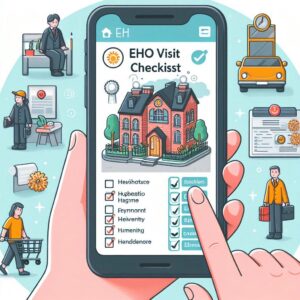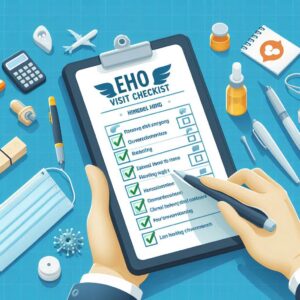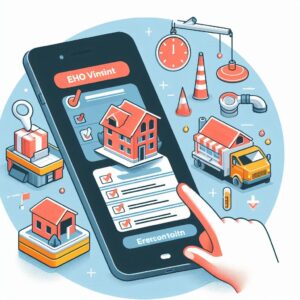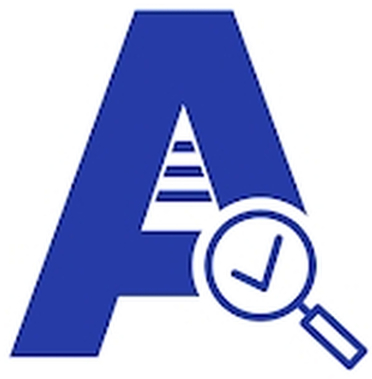Environmental Health Officer EHO Visit Checklist
Performing EHO visit checklist inspection ensures compliance with health & safety standards, efficient documentation, and streamlined reporting.

General Cleanliness and Hygiene
- Overall Cleanliness:
- Ensure all areas, including kitchen, dining, storage, and restrooms, are clean and free from clutter.
- Regularly clean and sanitize floors, walls, ceilings, and equipment.
- Waste Management:
- Properly dispose of waste and maintain clean and covered garbage bins.
- Ensure regular waste removal and proper recycling practices.
- Pest Control:
- Have an effective pest control program in place.
- Regularly inspect for signs of pests and maintain records of pest control treatments.
Food Safety and Handling
- Food Storage:
- Store food at appropriate temperatures (refrigerated items below 41°F/5°C and frozen items below 0°F/-18°C).
- Properly label and date all food items.
- Use FIFO (First In, First Out) method for inventory rotation.
- Temperature Control:
- Regularly monitor and record temperatures of refrigerators, freezers, and hot holding units.
- Calibrate thermometers regularly.
- Cross-Contamination Prevention:
- Store raw and cooked foods separately.
- Use color-coded cutting boards and utensils.
- Implement proper handwashing and use gloves when necessary.
Personal Hygiene
- Handwashing Facilities:
- Ensure handwashing stations are accessible and well-stocked with soap, paper towels, and hand sanitizers.
- Display proper handwashing procedures.
- Employee Hygiene:
- Enforce a strict handwashing policy for employees.
- Ensure employees wear clean uniforms and maintain personal cleanliness.
- Provide hairnets, gloves, and aprons as needed.
Equipment and Utensils
- Cleaning and Sanitizing:
- Clean and sanitize equipment, utensils, and surfaces after use.
- Use appropriate cleaning agents and follow manufacturer instructions.
- Maintenance:
- Regularly inspect and maintain equipment to ensure it is in good working condition.
- Repair or replace damaged or faulty equipment promptly.
Documentation and Records
- Training Records:
- Maintain records of employee training on food safety and hygiene practices.
- Ensure all employees have up-to-date certifications where required.
- Cleaning Schedules:
- Keep detailed cleaning schedules and logs.
- Ensure all cleaning tasks are signed off upon completion.
- Temperature Logs:
- Maintain accurate records of temperature checks for refrigerators, freezers, and hot holding units.
- Record cooking and cooling temperatures for food items.
- Pest Control Records:
- Keep records of pest control inspections and treatments.
- Document any pest sightings and actions taken.
- Maintenance Logs:
- Record regular maintenance checks and repairs for equipment and facilities.
- Keep documentation of any servicing or calibration performed.


Health and Safety Compliance
- Health Policies:
- Enforce policies for reporting and managing employee illnesses.
- Ensure employees stay home when sick and follow return-to-work guidelines.
- Safety Procedures:
- Implement and enforce safety procedures for handling hot equipment, sharp objects, and hazardous substances.
- Display safety signs and provide safety equipment (e.g., gloves, goggles).
- Emergency Procedures:
- Have clear procedures for emergencies such as fires, power outages, or chemical spills.
- Ensure fire extinguishers and first aid kits are accessible and maintained.
Specific Inspection Areas
- Kitchen Area:
- Check cleanliness and organization of kitchen surfaces, equipment, and storage areas.
- Ensure proper ventilation and lighting.
- Storage Area:
- Inspect storage areas for proper organization and cleanliness.
- Ensure food items are stored off the floor and away from walls.
- Restrooms:
- Ensure restrooms are clean, well-stocked, and maintained.
- Check for proper handwashing facilities and supplies.
- Dining Area:
- Maintain cleanliness and orderliness of dining tables, chairs, and floors.
- Ensure proper cleaning and sanitizing of dining utensils and surfaces.
Preparation Tips
- Conduct Regular Internal Audits: Regularly inspect your own facility to identify and address potential issues before an EHO visit.
- Stay Informed: Keep up-to-date with local health regulations and industry best practices.
- Train Staff: Ensure all staff members are well-trained in food safety, hygiene, and emergency procedures.
- Communication: Keep open lines of communication with employees regarding the importance of compliance and the procedures to follow.


EHO Visit Checklist Using a eAuditor Audits & Inspections
Performing an Environmental Health Officer EHO visit checklist inspection using eAuditor Audits & Inspections app involves a structured approach to ensure compliance with health and safety standards, efficient documentation, and streamlined reporting. Here’s a step-by-step guide to conducting the inspection:
1. Preparation
- Set Up the eAuditor Audits & Inspections App:
- Install: Ensure the eAuditor Audits & Inspections app is installed on your device.
- Configure: Set up the app with the EHO visit checklist, including categories and specific items to be inspected.
- Customize the Checklist:
- Tailor: Adjust the checklist in the app to reflect the specific EHO standards you need to evaluate.
- Gather Equipment:
- Mobile Device: Ensure your device is fully charged and operational.
- Additional Tools: Prepare any extra tools needed (e.g., thermometer, flashlight) if required for the inspection.
2. Conduct the Inspection
- Log In:
- Open the eAuditor Audits & Inspections app and log in with your credentials.
- Select Inspection Type:
- Choose the type of inspection (e.g., routine, follow-up) and specify the location or area being inspected.
- Start Inspection:
- Begin the inspection process by navigating to the EHO visit checklist in the eAuditor Audits & Inspections.
3. Complete the EHO Visit Checklist
A. General Cleanliness
- Premises:
- Inspect Cleanliness: Check for overall cleanliness of the premises, including floors, walls, and ceilings.
- Document: Take photos and make notes on the app about any areas that need attention.
- Restrooms:
- Inspect Facilities: Ensure restrooms are clean, stocked, and well-maintained.
- Record: Document cleanliness issues and provide photos if applicable.
- Waste Management:
- Check Bins: Ensure waste bins are covered, emptied regularly, and waste is disposed of correctly.
- Document: Record any issues with waste management.
B. Food Hygiene
- Food Storage:
- Check Conditions: Inspect food storage areas for cleanliness, proper labeling, and organization.
- Temperature Control: Verify temperatures of refrigerators and freezers.
- Document: Record temperatures and any deviations from the safe ranges.
- Preparation Areas:
- Inspect Surfaces: Ensure food preparation surfaces are clean and sanitized.
- Equipment: Check that equipment is clean and well-maintained.
- Document: Record any issues with preparation areas.
- Cross-Contamination Prevention:
- Inspect Practices: Verify that cross-contamination prevention practices are followed.
- Record Findings: Document any deviations and attach supporting evidence.
C. Pest Control
- Inspect for Pests:
- Check Signs: Look for signs of pest activity and verify pest control measures.
- Document Findings: Record evidence of pests and effectiveness of control measures.
- Pest Control Records:
- Review Records: Ensure pest control records are up-to-date and accessible.
- Document: Record any missing or incomplete records.
D. Personal Hygiene
- Staff Hygiene:
- Inspect Practices: Check that staff follow proper handwashing and hygiene practices.
- Protective Clothing: Ensure staff wear appropriate protective clothing.
- Document: Record any issues with staff hygiene.
- Health and Safety Training:
- Review Training: Verify that staff have received appropriate health and safety training.
- Document: Record any gaps in training records.
E. Compliance and Documentation
- Regulatory Compliance:
- Review Standards: Ensure all practices comply with relevant health and safety regulations.
- Document: Record any non-compliances and note corrective actions needed.
- Record Keeping:
- Update Records: Ensure all health and safety records are up-to-date in the app.
- Document: Record any discrepancies and update records accordingly.
F. Emergency Procedures
- Emergency Contacts:
- Verify Contacts: Ensure emergency contact numbers are posted and accessible.
- Document: Record any issues with emergency contact information.
- Incident Response:
- Check Procedures: Verify that procedures for responding to health and safety incidents are in place.
- Record: Document any issues with incident response procedures.
G. Customer Feedback
- Customer Complaints:
- Check System: Verify that there is a system for receiving and addressing customer complaints.
- Document: Record any issues with the handling of customer complaints.
- Customer Communication:
- Review Communication: Ensure customers are informed about health and safety practices.
- Document: Record any issues with customer communication.
4. Finalize the Inspection
- Review Data:
- Verify Entries: Review all data entered into the eAuditor Audits & Inspections for completeness and accuracy.
- Generate Report:
- Create Report: Use the eAuditor Audits & Inspections to generate a detailed inspection report, including observations, non-compliances, and recommendations.
- Submit Report:
- Send Report: Submit the report through the eAuditor Audits & Inspections to relevant stakeholders or a central database.
- Discuss Findings:
- Meeting: Discuss findings with management and agree on necessary corrective actions.
5. Follow-Up
- Monitor Corrective Actions:
- Track Progress: Use the eAuditor Audits & Inspections to monitor the progress of corrective actions and improvements.
- Schedule Re-Inspection:
- Plan Follow-Up: Schedule follow-up inspections to ensure corrective actions have been implemented effectively.
- Provide Feedback:
- Share Insights: Offer feedback and additional training if needed to address specific issues.
Using the eAuditor Audits & Inspections
- Dashboard:
- Overview: Access a dashboard for an overview of inspection findings, non-compliances, and corrective actions.
- Notifications: Set up notifications for follow-up actions or upcoming inspections.
- Real-Time Updates:
- Sync Data: eAuditor Audits & Inspections syncs data in real-time to keep records accurate and up-to-date.
- Analytics:
- Analyze Trends: Use the eAuditor Audits & Inspections’ analytics features to identify trends, such as recurring issues or areas needing improvement.
Using eAuditor Audits & Inspections app for conducting an EHO visit checklist inspection helps ensure a structured and thorough evaluation process, improves documentation efficiency, and facilitates ongoing improvements in health and safety practices.
